Last Updated on March 13, 2022 by Heather Hart, ACSM EP, CSCS
Every ultrarunner knows that the one of the non-negotiable aspects of this sport is fueling. If you do not eat enough to fuel your body over ultramarathon distances, your body will likely rebel, leaving you feeling exhausted, probably more than a bit hangry, and will likely compromise the outcome of your race.
But, every ultrarunner also knows that the fueling process can be fickle. Too little and you bonk, too much and you anger your gastrointestinal system, ending up with common runner’s stomach issues like nausea, diarrhea, bloating, or even vomiting.
While I personally feel like an expert on this topic from an experience point of view (nausea, GI issues, refusal to eat and subsequent bonking were my MO for a while. I’m not even kidding, I used to lie to my crew and tell them I ate when I actually didn’t, because my stomach was so mad), I reached out to an actual nutrition expert to help with this post instead.
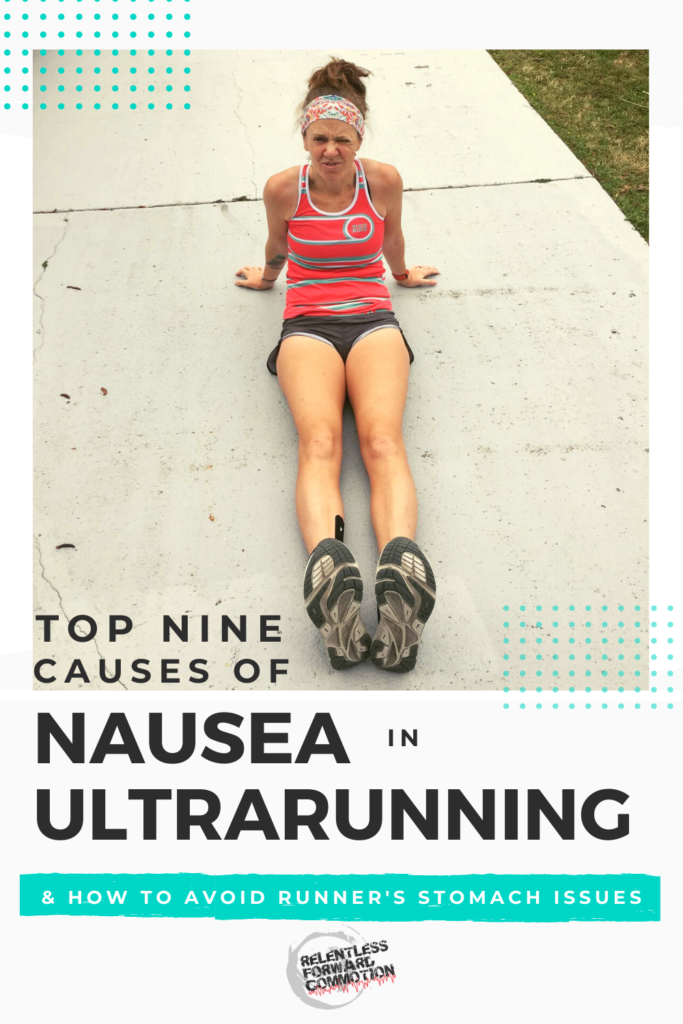
Julie Shoben is a Registered Dietician who specifically works with ultrarunners to help them optimally fuel their training and racing. I asked her to break down what the most common causes of nausea in ultrarunning are, and how runners can try to avoid them.
Top 9 Causes of Nausea in Ultrarunning (and How to Avoid Them During Your Ultramarathon)
1. Under-Fueling
That’s right, under fueling can actually cause runner’s stomach issues. Seems pretty counterintuitive, doesn’t it? But it happens to ultrarunners all of the time.
Not eating enough to meet your body’s physical demands of the race can happen for a number of reasons. And unfortunately, many ultrarunners simply aren’t taking in as many calories and carbohydrates during an ultramarathon as they should.
According to Julie, some of the more common reasons for under-fueling during a race are:
- Not fueling soon enough in the race
- Palate fatigue
- Difficulty chewing and swallowing
- Forgetting to eat
- Simply not feeling hungry
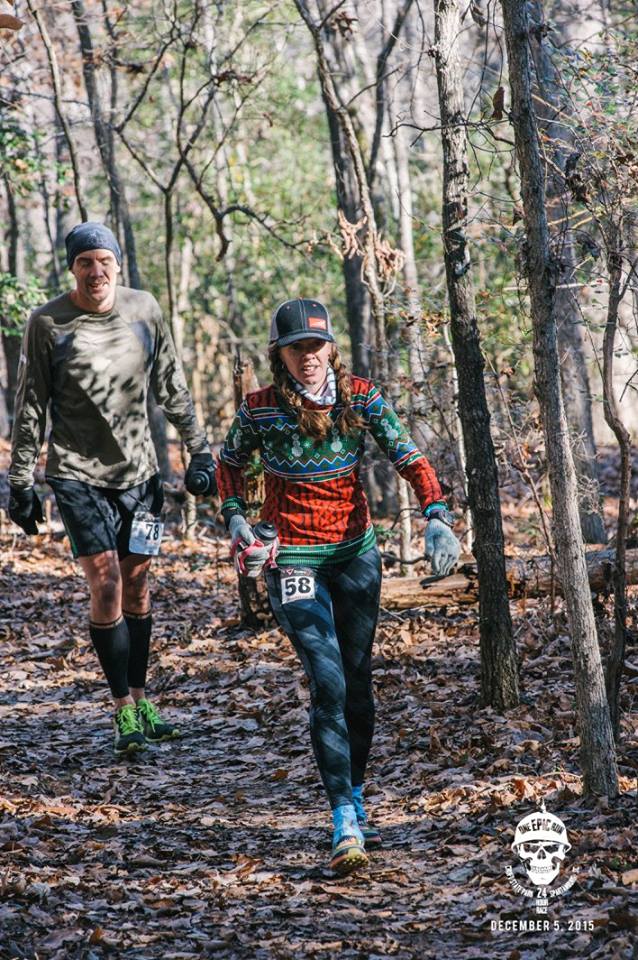
How to Avoid Under Fueling:
According to Julie, you can lessen the risk of under-fueling by fueling early, and being top heavy on calorie intake during the beginning of the race. Further, Julie says:
- Practice fueling on training runs with a variety of foods, so you can avoid palate fatigue
- Try bringing a lemon drop candy (or a few) with you to stimulate saliva if you suffer from dry mouth, and struggle eating.
- Set a timer to remind you to eat if you forget easily. (Julie recommends fueling every 20-30 min
- Switch to liquid foods like a recovery drink or protein shake (with carbs) or a smoothie later in the race, if you are struggling to eat.
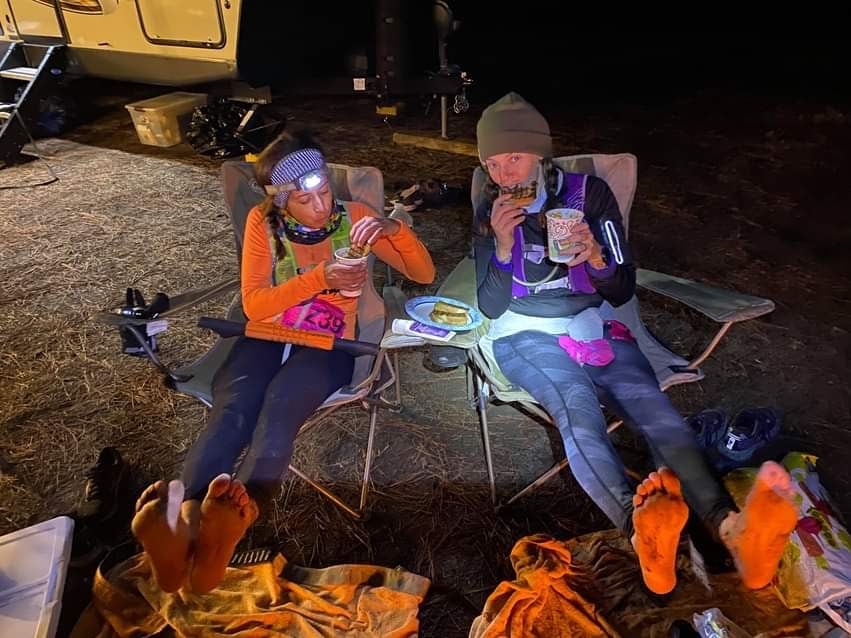
2. Dehydration
Not drinking enough fluids during your ultramarathon can lead to nausea and gastrointestinal distress.
When inadequate amounts of water are consumed during an ultramarathon in order to compensate for fluids lost through normal bodily functions (urine, sweat, etc.), a runner can quickly become dehydrated.
And dehydration can further result in a condition known as hypernatremia, or when the sodium level in the blood becomes abnormally high because water loss exceeds sodium loss. which can make GI issues worse like diarrhea, nausea and vomiting.
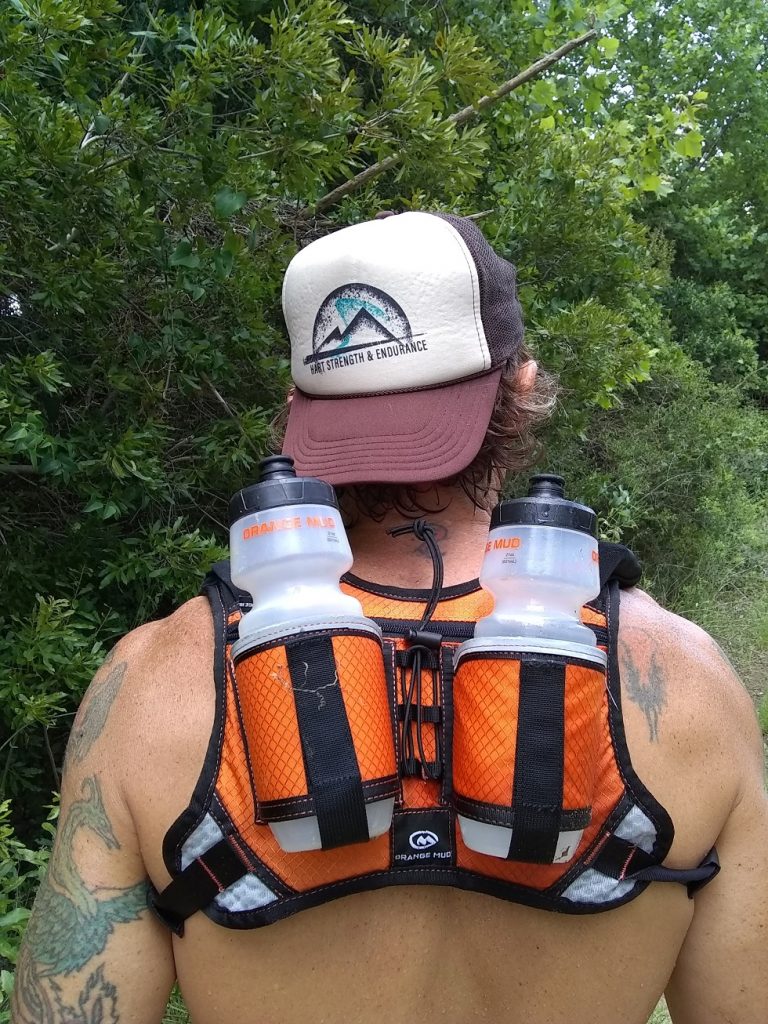
How to Avoid Dehydration During an Ultramarathon:
Unfortunately this one can be tricky, because so many things affect how much a runner should drink like heat, cold, humidity, elevation, and speed/intensity.
Taking the time to determine your sweat rate and have a better understanding of how much fluid you should be drinking in various running climates, can help avoid dehydration.
3. Hyponatremia
But on the opposite end of the hydration spectrum is what is known as hyponatremia…aka you drank TOO much.
Hyponatremia is a condition in which sodium (salt) levels in the blood become abnormally low. In the case of running, this can often happen because of overhydration, when a runner consumed too much water. Mild cases of hyponatremia can result in dizziness or leaving a runner feeling lightheaded, nausea and in severe (but rare) cases death.
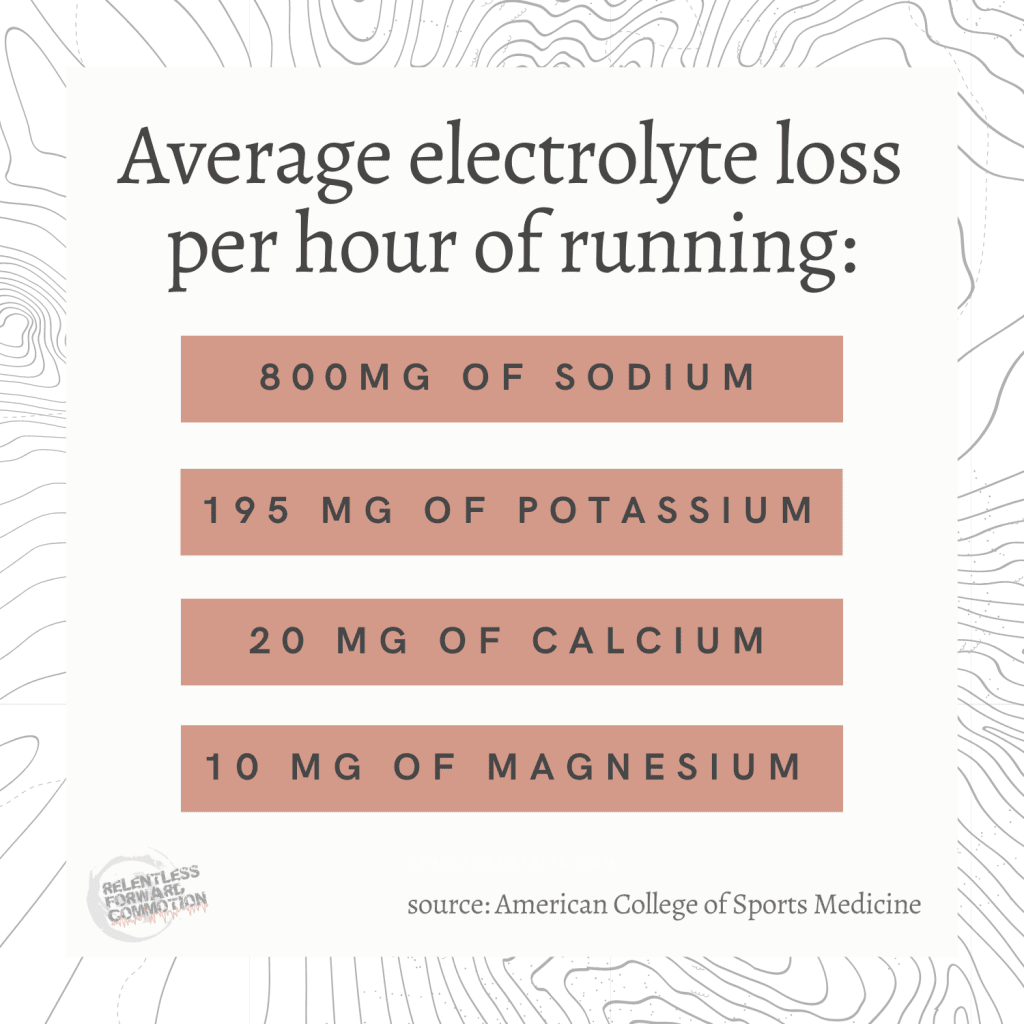
How to Avoid Hyponatremia While Running:
According to Julie: “Consuming electrolytes with a particular focus on sodium is important. Rates vary based on the runner’s sweat rate. A general place to start is consuming 500mg of sodium for every 1 liter of fluid you drink. Sodium can come from energy food, pickles, broth, electrolyte beverages or capsules.”
To learn more about electrolytes, check out the post: Electrolyte Needs & Supplementations for Runners Explained
4. Not Fueling Early or Often Enough
Not to be confused with under fueling, Julie says that waiting too long to start eating can also result in nausea in ultrarunning, or other runner’s stomach issues.
According to Julie: “When a runner waits to fuel it gives the stomach an opportunity to ‘fall asleep’ because the blood flow is redirected to working muscles. When the runner does start to fuel the stomach and digestive tract isn’t ready for the food which can cause nausea, vomiting, lack of appetite, cramping, bloating.”
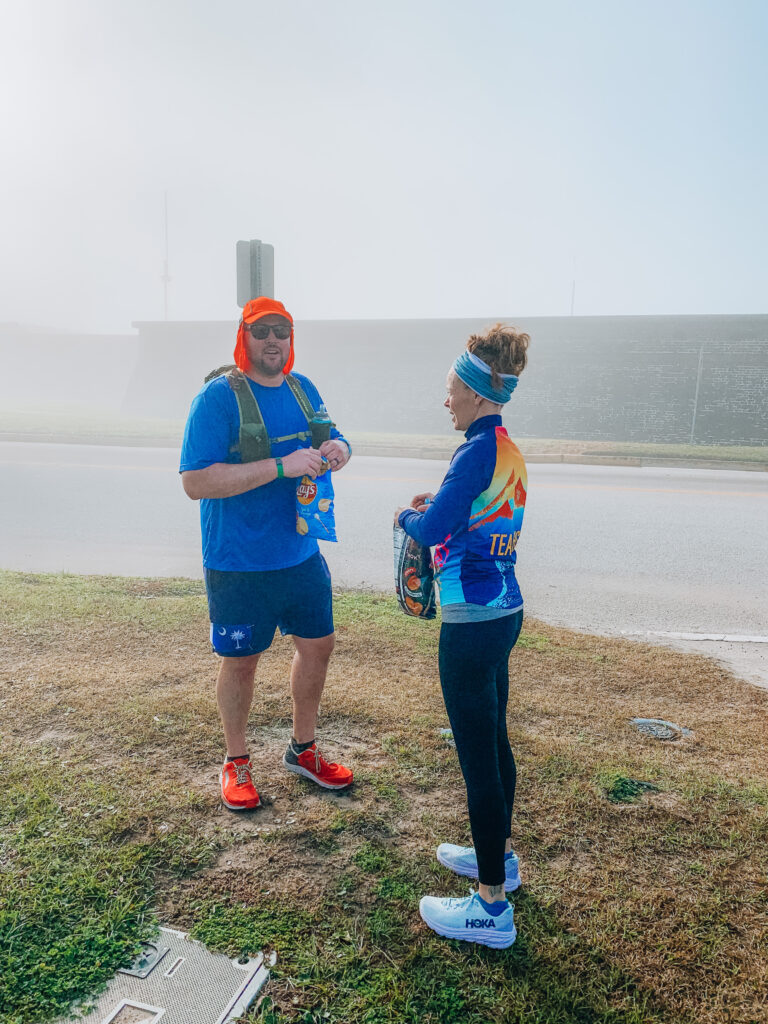
How to Ensure You Fuel Early & Often Enough:
Even though the GU packets tell you to eat every 45 minutes to an hour, there’s no hard-fast rule that you have to do that.
Last year I personally started experimenting with two things:
- Breaking my hourly caloric intake up and eating every 30 minutes instead of every hour, to achieve the same calories per hour, and
- Starting my run with a gel. Right before I hit the “start” button on my COROS, I slam down a gel (I can’t stomach most gels, but have had great success with Science in Sport gels).
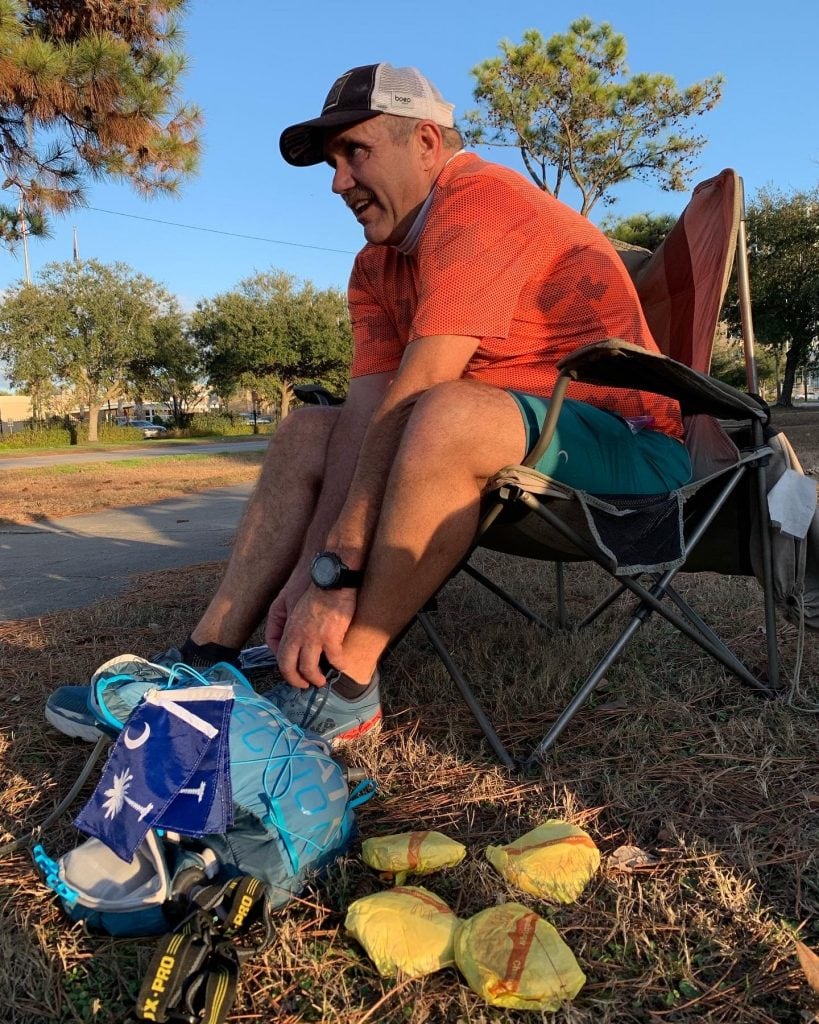
5. Heat
Living in coastal, swampy, South Carolina, I am no stranger to the effects heat can have on a runner’s stomach. Not only is your body focused on trying to keep your core temperature low, so digestion becomes a non-priority, but the temperatures make you lose your desire to even want to eat. Which, of course, leads back to cause #1 for nausea in ultrarunning: under-fueling.
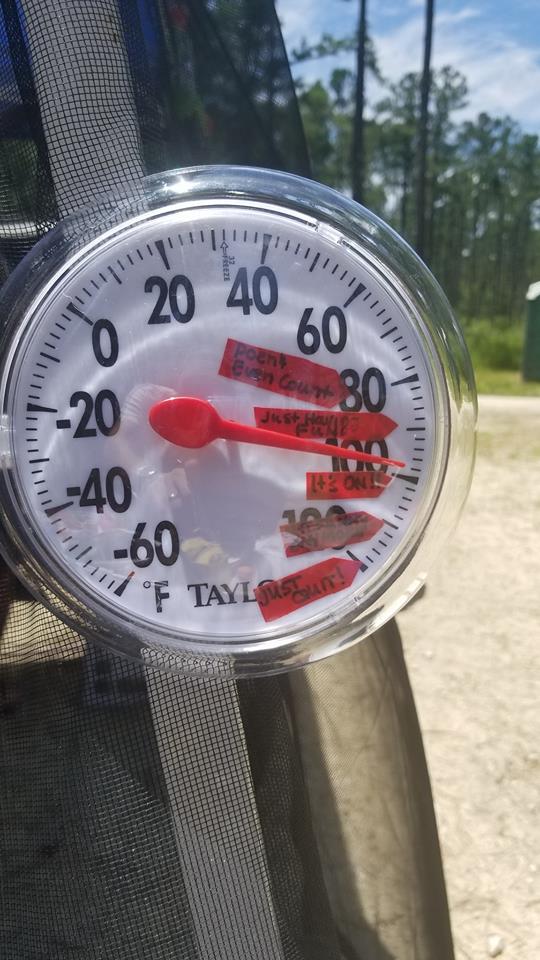
According to Julie, overheating can make it quite difficult for runners to keep up on fueling as it decreases appetite and increases GI upset.
How to Prevent Heat from Causing Runner’s Stomach Issues:
Julie says that you should keep drinking water cold and do everything you can to keep your body cool, such as:
- Keep ice in your hydration bladder, or use an insulated sleeve around the bladder.
- Wear light colored clothing (avoid black) or wear a sun shirt
- Wear a hat and buff around your neck (like this “RunCool” ice bandana from Nathan Sports).
- Dip hat and buff in streams or put ice in the hat, sleeves (around wrists) or buff.
- Prioritize consuming sodium and staying hydrated.
6. Intensity
There is no doubt that high intensity efforts can cause nausea and runner’s stomach issues. Anyone who has done 100 meter sprints, a lactate threshold test, or raced a 5K is fully aware that intensity can make you want to barf.
Not only that, but running at a harder/higher intensity might make you forget to eat and drink, which leads back to point #1: under fueling, and point #2: dehydration. I am entirely guilty of that, look at my misery here at the Trotting for Tatas 9 hour ultra:
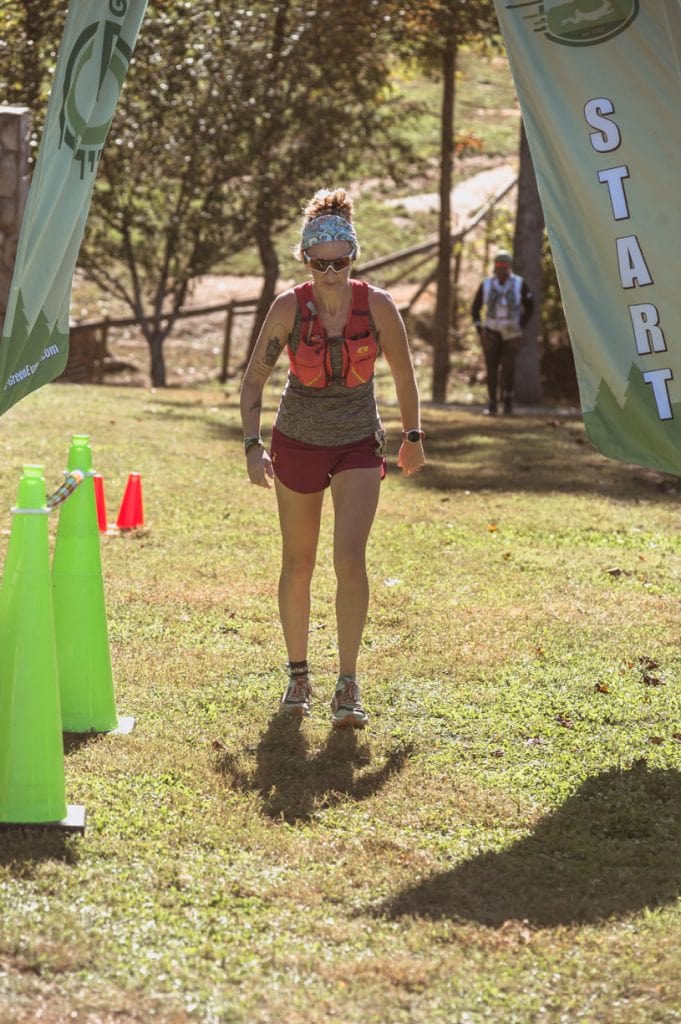
How to Manage Intensity Induced Nausea During an Ultramarathon:
SLOW DOWN! Unless, of course, you’re Jim Walmsley or Clare Gallagher and you’re out to win the race.
But for the rest of us ultramarathon mortals, Julie says that taking time to slow down to ensure that you are properly fueling – even if that means walking for 5 or 10 minutes so you can actually eat something -will lead to a faster finish time because you prioritized fueling.
7. Race Day Nerves
Race day nerves can absolutely have an effect on a runner’s stomach, causing nausea or even physical GI issues. It’s probably half the reason why the port-a-potties are always packed before a race.
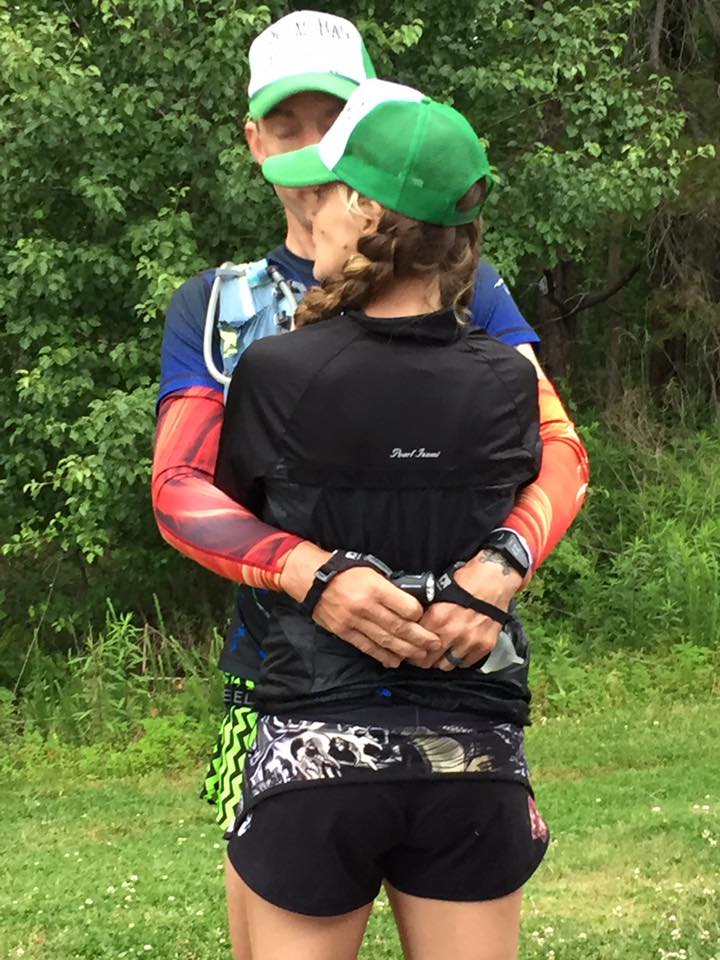
Julie says that our mind and gut are extremely connected. If a runner is anxious or nervous about the race, this can increase GI upset and worsen fueling problems during the race, because the nausea makes you not want to eat.
How to Tame Race Day Nerves and Quell Anxiety Based Nausea:
Julie shares the following tips to help avoid race day nerves, and subsequent runner’s stomach issues:
- Before the race, try belly breathing at breakfast to improve digestion, as well as before the race to calm the nerves
- Read positive affirmations, meditate or talk to a fellow runner about your nerves.
- Best yet, make sure you are well prepared for the race, you know when the aid stations are, have drop bags planned and an ultramarathon crew that you trust, have a game plan for your fueling (because you have practiced it so well) and are well prepared for weather changes or other various changing factors that could impact your race.
8. Breakfast
Breakfast is my personal favorite meal of the day, hands down. But, eating breakfast too close to the start of your race can result in nausea or runner’s stomach issues because you haven’t had time to digest.
Pre-Ultramarathon Breakfast Tips:
Want to make sure breakfast doesn’t mess with your GI system on race day? Here’s Julies breakfast tips:
- Finish eating breakfast at least 90 min before the start of the race (2 hours is ideal).
- Chew food thoroughly and take your time eating. This gives time for the body to digest the food and go to the bathroom and get out the poops before the start.
- Be mindful of not consuming a lot of fat or high fiber foods before racing, if you are not used to eating those foods before running.
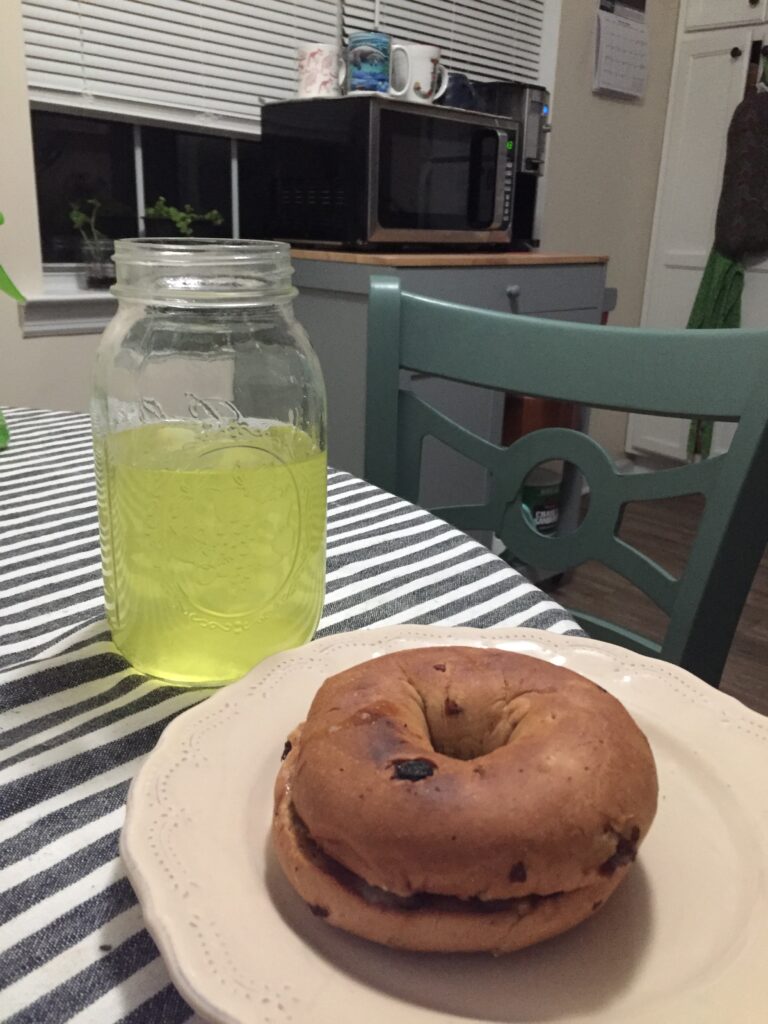
9. Use of NSAIDs While Running
Non-steroidal anti-inflammatory drugs (NSAIDs) are over the counter medicines that are widely used to relieve pain, and reduce inflammation. I feel like we’ve known for well over a decade now to avoid NSAIDs while running. Research shows that use of NSAIDs while running may lead to gastrointestinal ulcers, acute kidney injury and a risk of cardiovascular events.
But, NSAIDs can also irritate the stomach lining and cause nausea, GI distress, and other runner’s stomach issues. In fact, a study published in 2020 surveyed 806 recreational runners, and found that 87.8% used NSAIDs. A third of runners had experienced an adverse drug reaction associated with NSAIDs, usually gastrointestinal. (source)
How to Avoid NSAIDS Causing Nausea During an Ultramarathon
Just don’t take before or during an ultra. Problem solved.
Final Thoughts on Race Day Nausea:
As pretty much every ultrarunner knows, nutrition and race day fueling can be a constant struggle. And, as pretty much every ultrarunner knows (or will soon find out), not eating enough during a race – even when you are experiencing runner’s stomach issues – can mean the end of your race.
Finding what works well for you takes a ton of practice. My suggestion as a coach is to start practicing your ultrarunning nutrition strategy from the very first long run of your training cycle. That way, you’ll hopefully have it nailed down come race day.
Related Helpful Posts:
Top 7 Everyday Nutrition Mistakes Runners Make
What to Eat the Week Before an Ultramarathon: Race Taper Nutrition
Ultrarunning and Caffeine: Pre and Race Day Supplementation Strategies Explained
Heather Hart is an ACSM certified Exercise Physiologist, NSCA Certified Strength and Conditioning Specialist (CSCS), UESCA certified Ultrarunning Coach, RRCA certified Running Coach, co-founder of Hart Strength and Endurance Coaching, and creator of this site, Relentless Forward Commotion. She is a mom of two teen boys, and has been running and racing distances of 5K to 100+ miles for over a decade. Heather has been writing and encouraging others to find a love for fitness and movement since 2009.

Leave a Reply